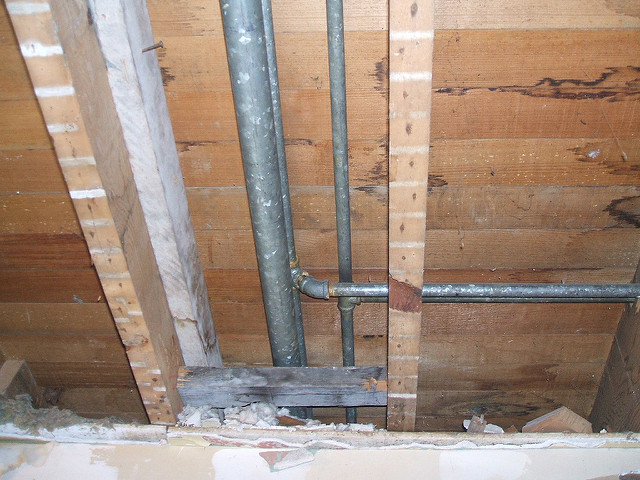Guide To Water Leak Detection In Your Home
Guide To Water Leak Detection In Your Home
Blog Article
Each person will have their unique rationale in relation to Top leak detection hacks.

Early detection of dripping water lines can minimize a potential disaster. Some tiny water leaks might not be visible.
1. Analyze the Water Meter
Every house has a water meter. Examining it is a surefire manner in which aids you discover leakages. For starters, switch off all the water sources. Ensure no one will certainly flush, utilize the tap, shower, run the washing device or dishwasher. From there, most likely to the meter and watch if it will alter. Given that no one is using it, there should be no activities. That suggests a fast-moving leakage if it moves. Also, if you find no changes, wait an hour or two and inspect back once more. This suggests you might have a slow leakage that might also be below ground.
2. Inspect Water Intake
If you identify sudden changes, despite your usage being the very same, it indicates that you have leaks in your plumbing system. A sudden spike in your costs shows a fast-moving leak.
A consistent increase every month, even with the exact same habits, shows you have a slow-moving leak that's also slowly escalating. Call a plumber to thoroughly inspect your property, particularly if you feel a cozy location on your floor with piping beneath.
3. Do a Food Coloring Test
When it comes to water usage, 30% comes from commodes. If the color in some way infiltrates your bowl during that time without flushing, there's a leakage in between the storage tank and also bowl.
4. Asses Exterior Lines
Do not fail to remember to examine your outdoor water lines too. Ought to water seep out of the connection, you have a loose rubber gasket. One little leak can squander tons of water and also surge your water expense.
5. Inspect and Examine the Circumstance
Home owners ought to make it a routine to inspect under the sink counters as well as even inside cabinets for any bad odor or mold growth. These two red flags indicate a leak so prompt focus is required. Doing routine examinations, also bi-annually, can conserve you from a major problem.
Check for stainings as well as damaging as a lot of devices and pipes have a life expectancy. If you suspect dripping water lines in your plumbing system, don't wait for it to escalate.
Early discovery of leaking water lines can minimize a prospective disaster. Some little water leaks might not be noticeable. Inspecting it is a proven way that aids you discover leakages. One little leak can throw away heaps of water as well as surge your water costs.
If you think dripping water lines in your plumbing system, do not wait for it to escalate.
How to Know If Your Home Has a Hidden Leak
Water Meter Reveals Inexplicable Water Usage
If you’d like to test whether or not there’s a leak somewhere in your home, you can do this using your water meter. Here is how to conduct the test:
Don’t use any water in your home for at least 30 minutes; this also means not turning on faucets or water-using appliances.
Go outside, and check your water meter for activity.
If your water meter shows that there was activity, even though no one was using any water, this proves that there is a leak in your home.Visible Mold or Mildew Growth
Leaks behind walls create moist, dark environments that allow mold and mildew to grow and thrive. Eventually, you might see mold growth forming on the wall closest to a hidden leak.
If mold is growing in an area that receives a high amount of moisture, such as a bathroom, it may simply be an indication that better ventilation is needed. However, if you see mold growth on a wall or the ceiling in an area where you would not expect, you probably have a hidden leak.
Musty, Mildew Odor
Sometimes you might not be able to see the mold or mildew that is growing as a result of a leak. However, the smell can give the problem away just as easily. If you catch a whiff of something musty, there’s a good chance that old water is collecting somewhere in your home that you can’t see.
Stained/Warped Walls, Ceilings, or Floors
When your home soaks up water, a variety of red flags can become visible, including ceiling stains, bubbling drywall, warped walls, and sagging floors. While these issues can be caused by excess humidity, they can also be signs that a pipe or plumbing connection has started leaking behind your walls.
Inexplicably High Water Bill
After a while, you get a general sense for what your water bill should be. If you own a pool or sprinkler system, your bill will tend to be higher during summer. However, if you receive a water bill that seems especially high, and you can’t figure out what caused it, then you may have a hidden leak somewhere that’s increasing your bill.
https://www.plumbingjoint.com/blog/2019/july/how-to-know-if-your-home-has-a-hidden-leak/

Hopefully you enjoyed reading our post on Finding hidden leaks. Thanks so much for taking the time to read through our article. Kindly take the time to distribute this blog if you liked it. We take joy in reading our article about Finding hidden leaks.
Report this page